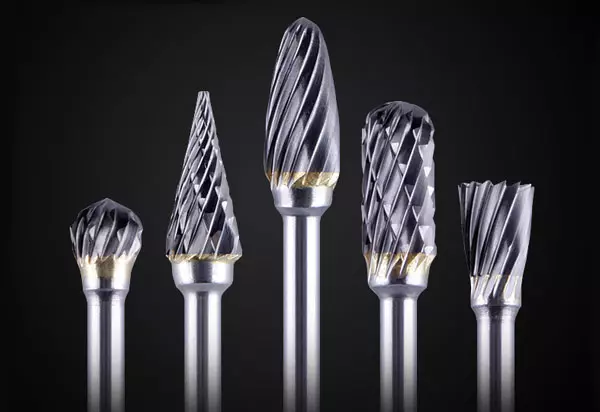Tool Coating of Hard Alloy Cemented Carbide Rotary File for Longer Tool Lives
On the surface of a cemented carbide substrate with good strength and hardness, tool coating deposits a film of thin good wear resistance refractory metal or nonmetallic compound taking advantage of vapor deposition. Tool coating as a kind of chemical barrier and thermal barrier lessens heat dispersion and chemical reaction between cutter and workpiece, thereby reducing matrix wear.

There are two commonly used coating methods in production: physical vapor deposition and chemical vapor deposition. The abbreviation id PVD and CVD. The deposition temperature of physical vapor deposition is 500 degrees. The deposition temperature of chemical vapor deposition is 900~1100 degrees. Physical vapor deposition’s coating thickness is 2~5μm. Chemical vapor deposition‘s coating thickness reaches 5~10μm. The advantage is simple equipment and uniform coating. Generally speaking, the high-speed steel tool adopts the PVD way because the PVD way does not exceed the drawing temperature of high-speed steel itself. Hard alloy carbide burrs adopt CVD ways for the most part. When cemented carbide is coated with the CVD method, it is easy to form a stratum of decarburization layer between paintcoat and matrix because of high deposition temperature, leading to brittle fracture of the blade.

In the last decade, with the progress of coating technology, tungsten carbide burrs likewise use the PVD method. What’s more, foreign countries also use the combined technology of PVD and CVD to exploit complex coating techniques, named plasma chemical vapor deposition, commonly abbreviated as to the “PACVD” method. This way capitalizes on plasma to boost chemical reaction, lowering the coating temperature below 400 degrees on the basis of coating temperature has already reduced below 180~200 degrees. At this rate, there will not create diffusion, phase transformation, or exchange reaction, afterward, keeping the original toughness of the blade.
With the development of coating techniques, the coating categories of cemented carbide burr tools become more and more. They develop from single compounds to complicated compounds. The improvement of tool coating prolongs hard alloy cemented carbide rotary file’s working lives.